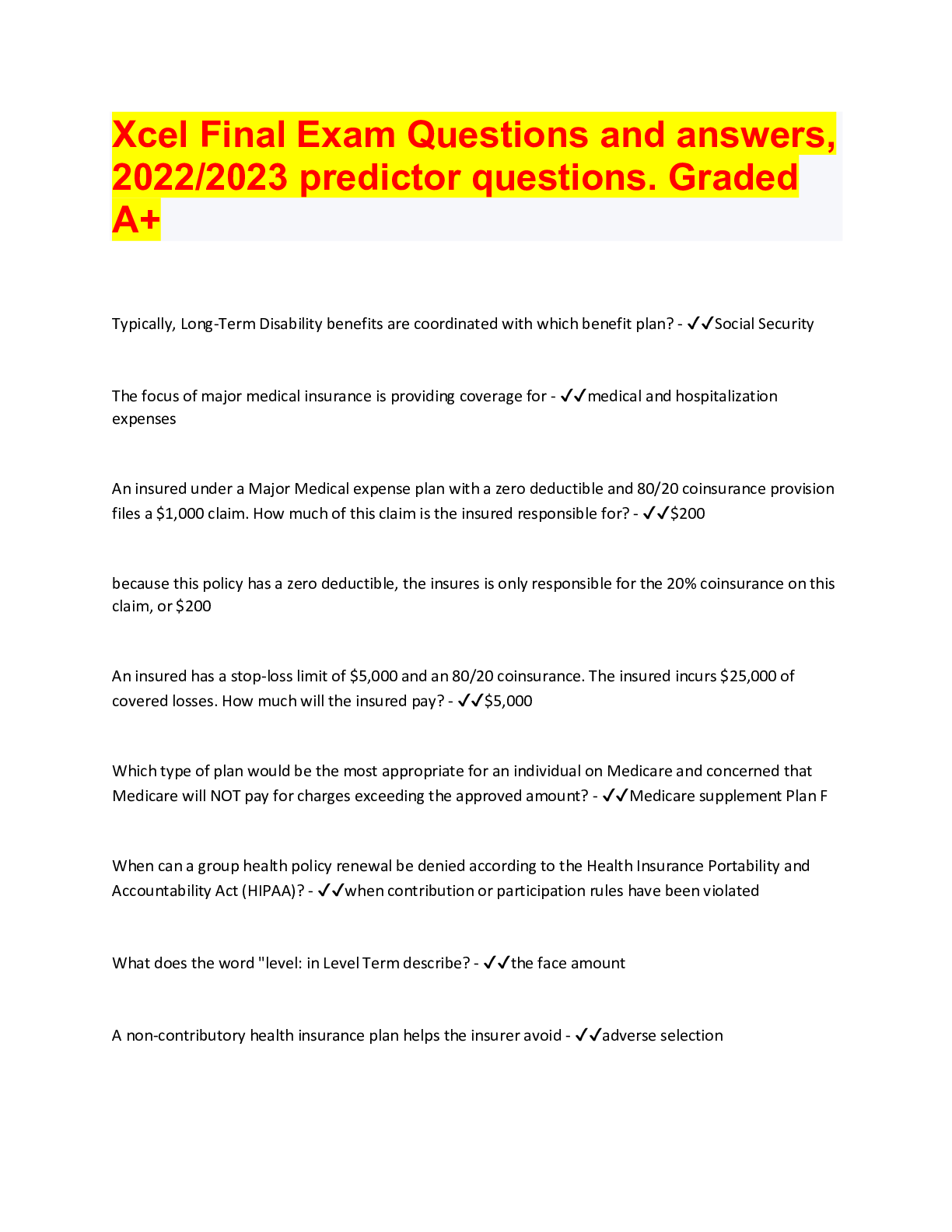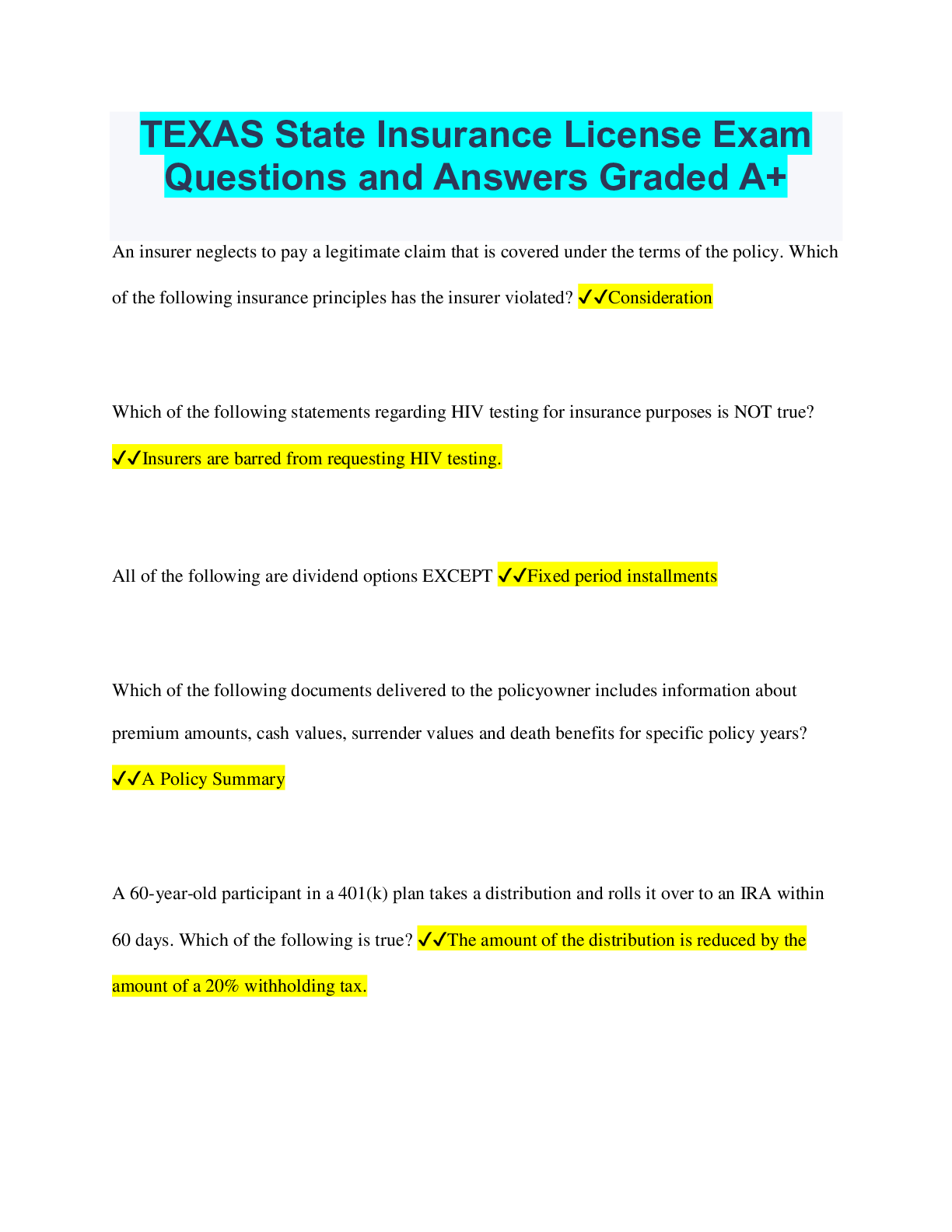*NURSING > QUESTIONS & ANSWERS > ACLS Certification Exam Questions and answers, Graded A+. 2022/2023. (All)
ACLS Certification Exam Questions and answers, Graded A+. 2022/2023.
Document Content and Description Below
ACLS Certification Exam Questions and answers, Graded A+. 2022/2023. Any organized rhythm without a pulse is defined as pulseless electrical activity (PEA). - ✔✔True Synchronized cardioversi... on is appropriate for treating an unknown wide complex tachycardia. - ✔✔True The aorta is the wall that separates the ventricles of the heart. - ✔✔False The most effective treatment for ventricular fibrillation is defibrillation. - ✔✔True An individual should be cleared-Ñ prior to a shock only when convenient. - ✔✔False PEA and asystole are considered non-shockable rhythms and follow the same ACLS algorithm. - ✔✔True Transcutaneous pacing should be used on an individual with bradycardia and inadequate perfusion if atropine is ineffective and the individual is exhibiting severe symptoms. - ✔✔True Low blood pressure may be an indication of hemodynamic instability. - ✔✔True Urgent defibrillation is essential for survival in the management of acute strokes. - ✔✔False Fibrinolytic therapy within three hours (in some cases 4.5 hours) of first onset of symptoms is the standard when treating ischemic stroke. - ✔✔True 100% oxygen is acceptable for early intervention but not for extended periods of time. - ✔✔True In a suspected acute stroke individual, you must always immediately obtain IV access. - ✔✔False There is never a pulse associated with VF; therefore, you should follow the PEA algorithm with individuals in VF. - ✔✔False If the AED advises no shock, you should still defibrillate because defibrillation often restarts the heart with no pulse. - ✔✔False If transcutaneous pacing fails, there are no other options to consider. - ✔✔False Medication is the only treatment for an unstable tachycardic individual. - ✔✔False For an individiual in respiratory arrest with a pulse, how often should they be ventilated? A) Give two breaths every 8 to 9 seconds, or 13 to 15 breaths per minute. B) Give one breath every 5 to 6 seconds, or 10 to 12 breaths per minute. C) Give one breath every 3 to 4 seconds, or 15 to 20 breaths per minute. D) Give one breath every 8 to 9 seconds, or 6 to 8 breaths per minute. - ✔✔B) Give one breath every 5 to 6 seconds, or 10 to 12 breaths per minute. Which item is NOT a basic airway skill? A) Placement of endotracheal tube (ET tube) B) Bag-mask ventilation C) Jaw-thrust maneuver without head extension D) Head-tilt-chin-lift maneuver - ✔✔A) Placement of endotracheal tube (ET tube) Which of the following basic airway adjuncts can be used in a conscious or semiconscious indivudual (with an intact cough and gag reflex)? A)Oropharyngeal airway (OPA) B) Endotracheal tube (ET tube) C) Nasopharyngeal airway (NPA) D) Esophageal-tracheal tube (combitube) - ✔✔C) Nasopharyngeal airway (NPA) Blood or secretions in the mouth or upper respiratory tract may threaten the airway. How can they be removed? A) Bag-mask ventllation B) Laryngeal tube C) None of the above D) Suctioning - ✔✔D) Suctioning What item is NOT an example of Advanced Airways? A) Esophageal-tracheal tube (combitube) B) Oropharyngeal airway (OPA) C) Endotracheal tube (ET tube) D) Laryngeal mask airway (LMA) - ✔✔B) Oropharyngeal airway (OPA) The compression-to-ventilation ratio during CPR prior to placement of an advanced airway is: A) 15:02 B) 20:01 C) 30:01:00 D) 30:02:00 - ✔✔D) 30:02:00 True statements about AED use in special situations include all of the following EXCEPT: A) Do not use an AED in water. B) Leave medication patches in place and place the AED electrode pads directly over the patch. C) Do not place the AED electrode pads directly over an implanted defibrillator or pacemaker. D) Extra care in placing electrode pads may be needed in individuals with a hairy chest. - ✔✔B) Leave medication patches in place and place the AED electrode pads directly over the patch. Antiarrhythmic drugs to consider for persistent VF/pulseless VT include all of the following EXCEPT: A) Lidocaine B) Amiodarone C) Atropine D) Magnesium - ✔✔INCORRECT: Lidocaine, Magnesium Bradycardia is defined as any rhythm disorder with a heart rate less than: A) 50 beats per minute B) 60 beats per minute C) 70 beats per minute D) 40 beats per minute - ✔✔B) 60 beats per minute Symptoms of bradycardia may include: A) Chest pain B) Shortness of breath C) Dizziness D) All of the above - ✔✔D) All of the above In the absence of immediately reversible causes, what is the first-line drug given for symptomatic bradycardia? A) Atropine B) Metoprolol C) Nitroglycerine D) Albuterol - ✔✔A) Atropine What is the first step in the treatment of persistent tachycardia (heart rate > 150 bpm) causing hypotension, altered mental status, and signs of shock? A) Defibrillation B) Obtain a 12-lead ECG C) Synchronized cardioversion D) Administer a calcium channel blocker - ✔✔INCORRECT: B) Obtain a 12-lead ECG D) Administer a calcium channel blocker CORRECT: If uncertain whether or not an individual is an appropriate candidate for synchronized cardioversion, the ACLS trained provider should: A) Seek expert consultation. B) Provide increased oxygenation. C) Obtain a coronary CT scan. D) Defer cardioversion until symptoms become irreversible. - ✔✔Seek expert consultation Which of the following is true concerning ischemic strokes? A) They account for 50% of all strokes and are caused by an occlusion of a vein to a region of the brain. B) They account for 87% of all strokes and are usually caused by an occlusion of an artery to a region of the brain. C) They account for 80% of all strokes and are caused by an occlusion of a vein to a region of the brain. D) They account for 13% of all strokes and are caused by an occlusion of an artery to a region of the brain. - ✔✔B) They account for 87% of all strokes and are usually caused by an occlusion of an artery to a region of the brain. All of the following are found within the 8 D's of Stroke Care EXCEPT: A) Delivery B) Detection C) Decision D) Debilitation - ✔✔D) Debilitation Where is the start of the mechanical movement of the heart generally thought to begin? A) Left atrium [Show More]
Last updated: 1 year ago
Preview 1 out of 17 pages
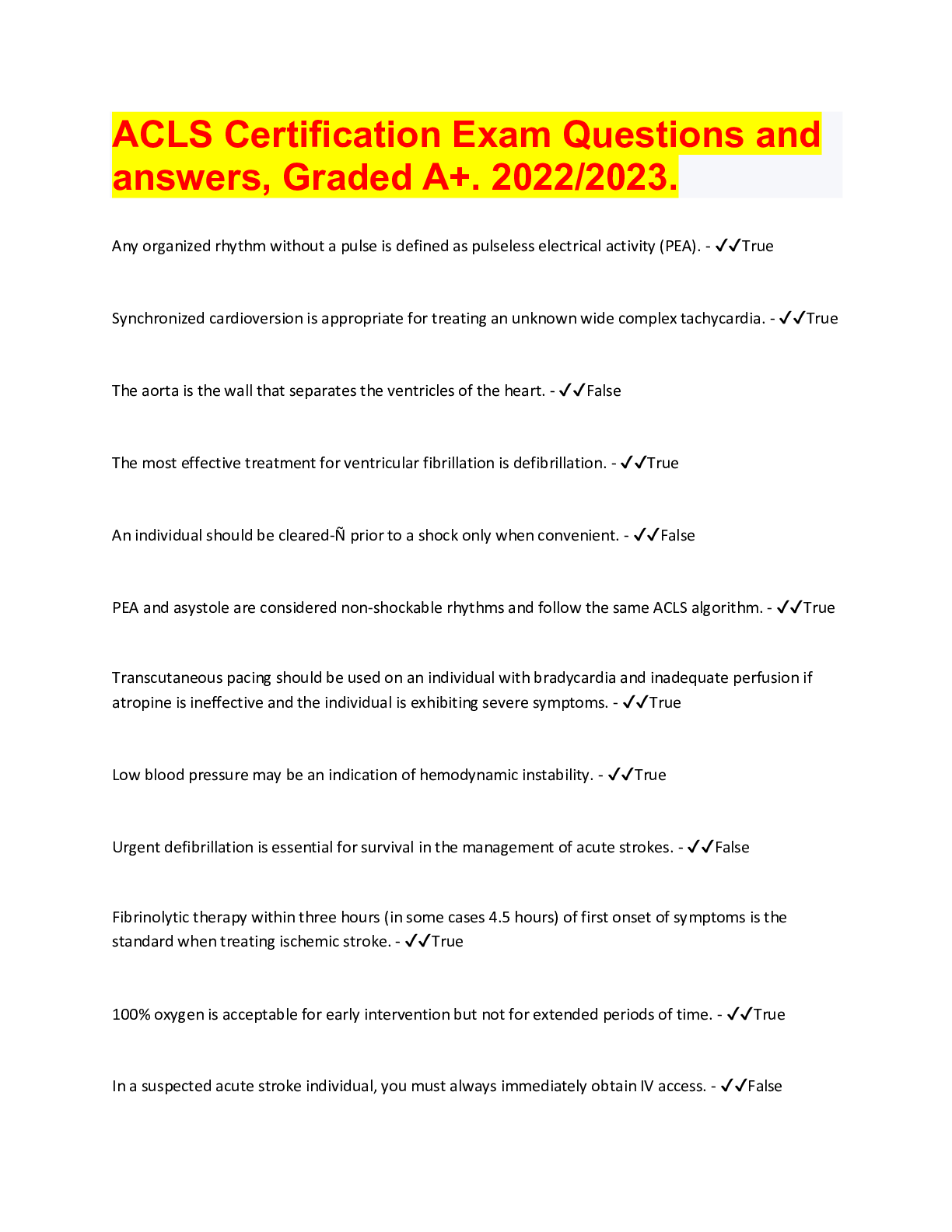
Reviews( 0 )
Document information
Connected school, study & course
About the document
Uploaded On
Sep 01, 2022
Number of pages
17
Written in
Additional information
This document has been written for:
Uploaded
Sep 01, 2022
Downloads
1
Views
114














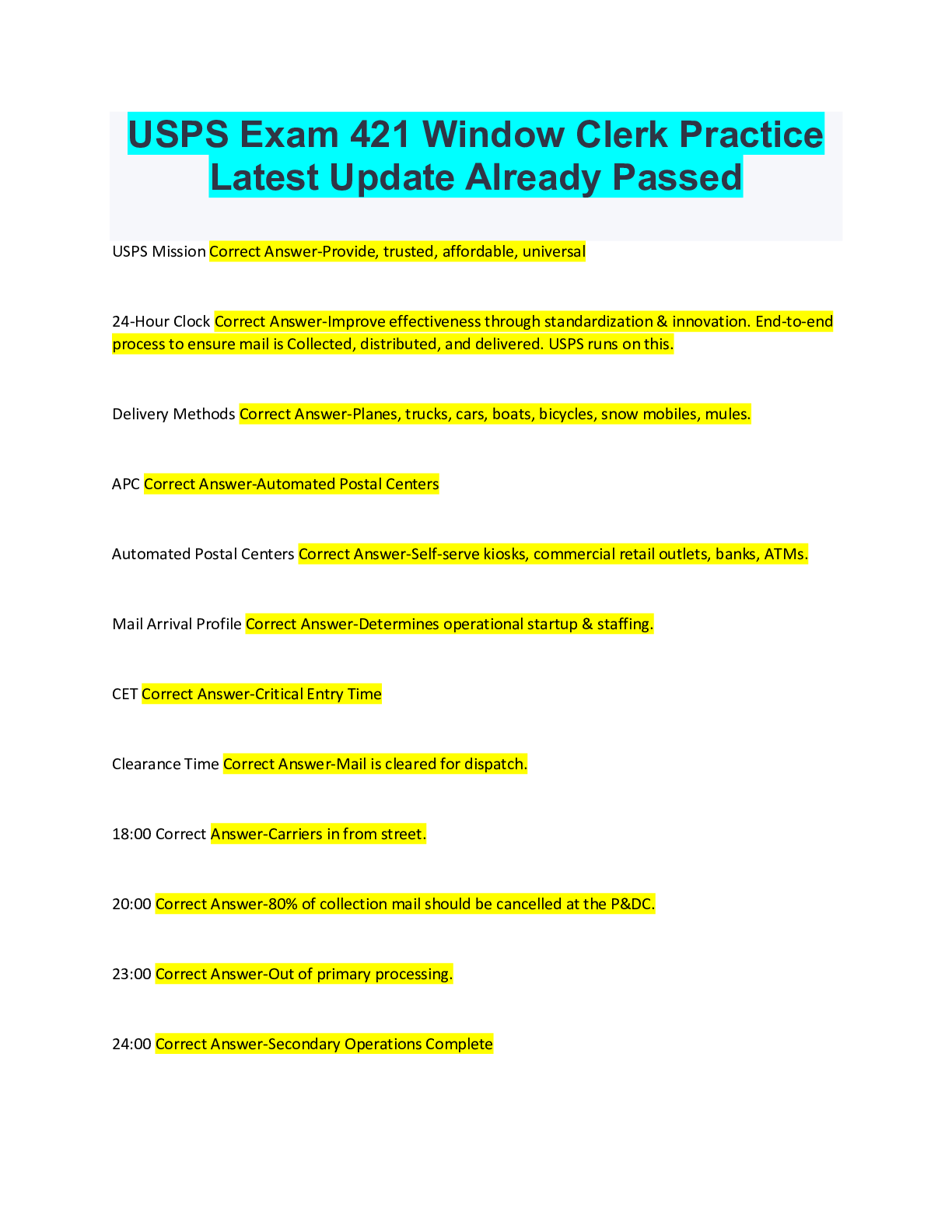

.png)


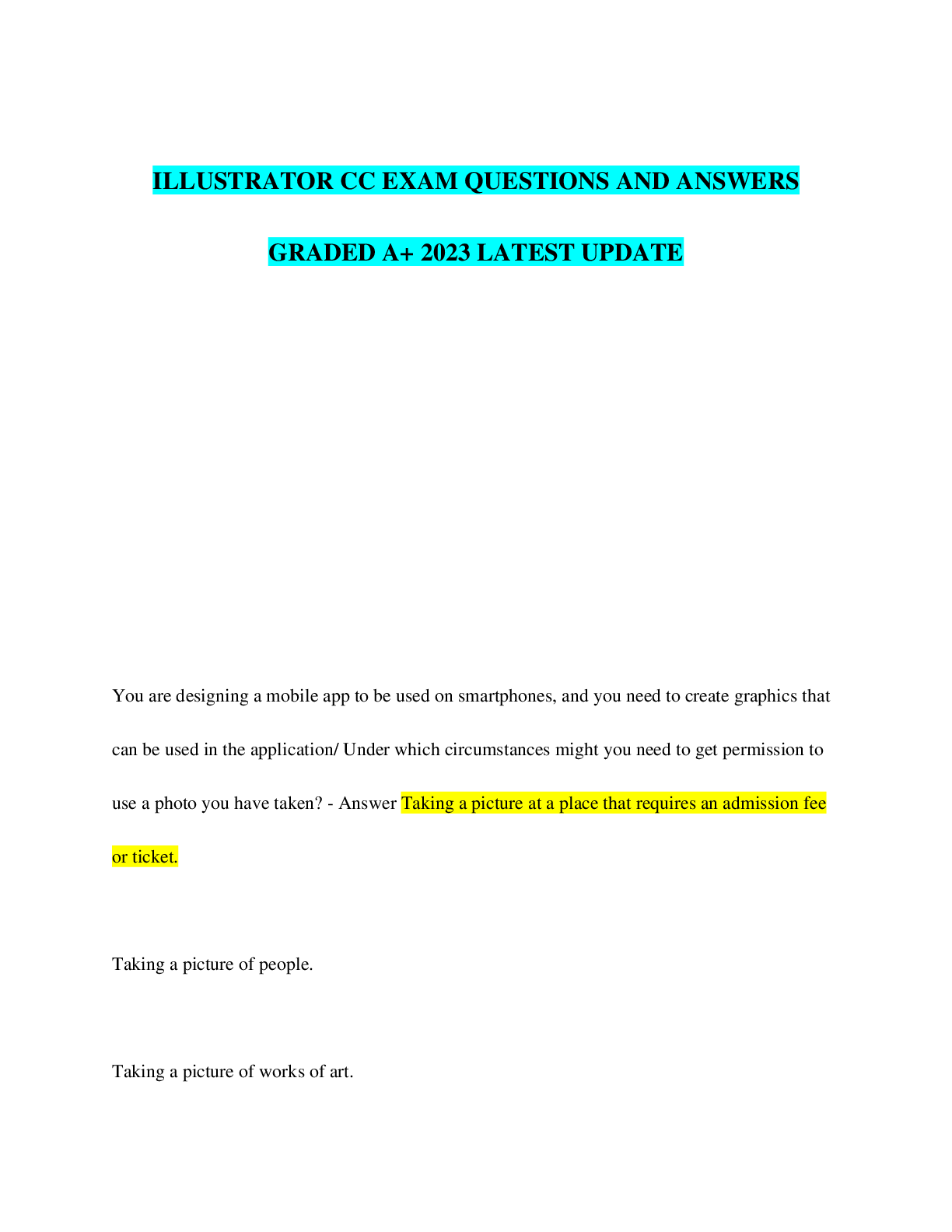
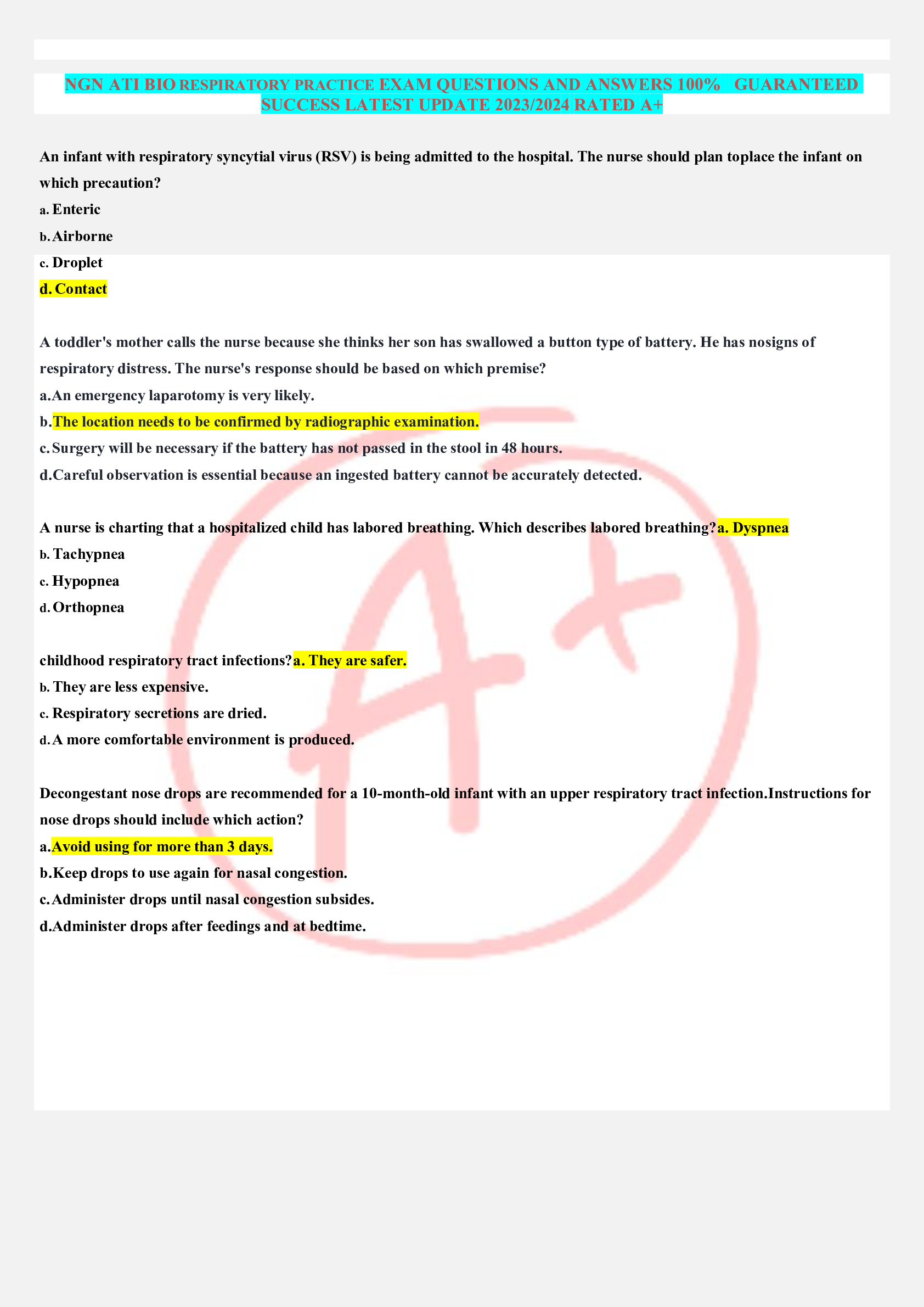
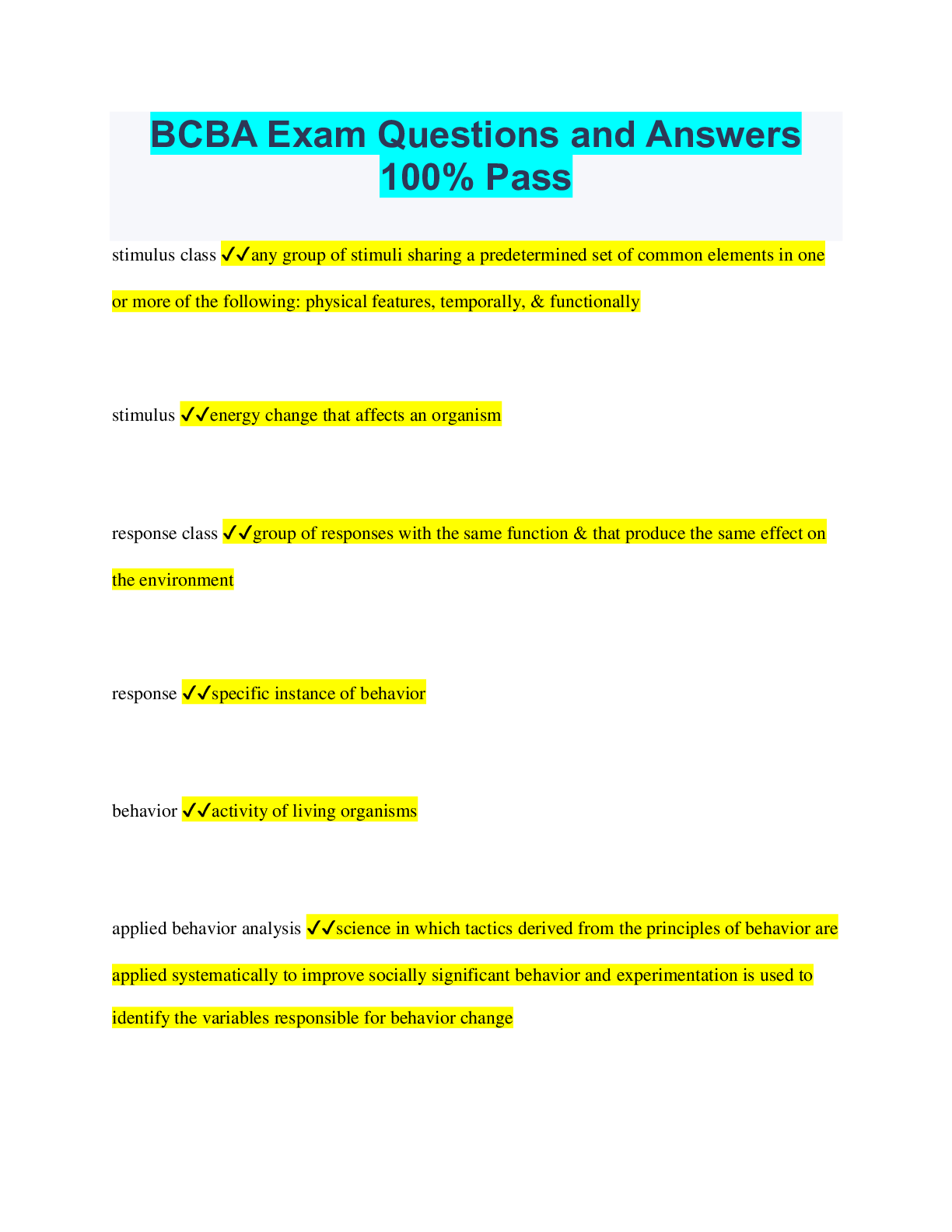
.png)

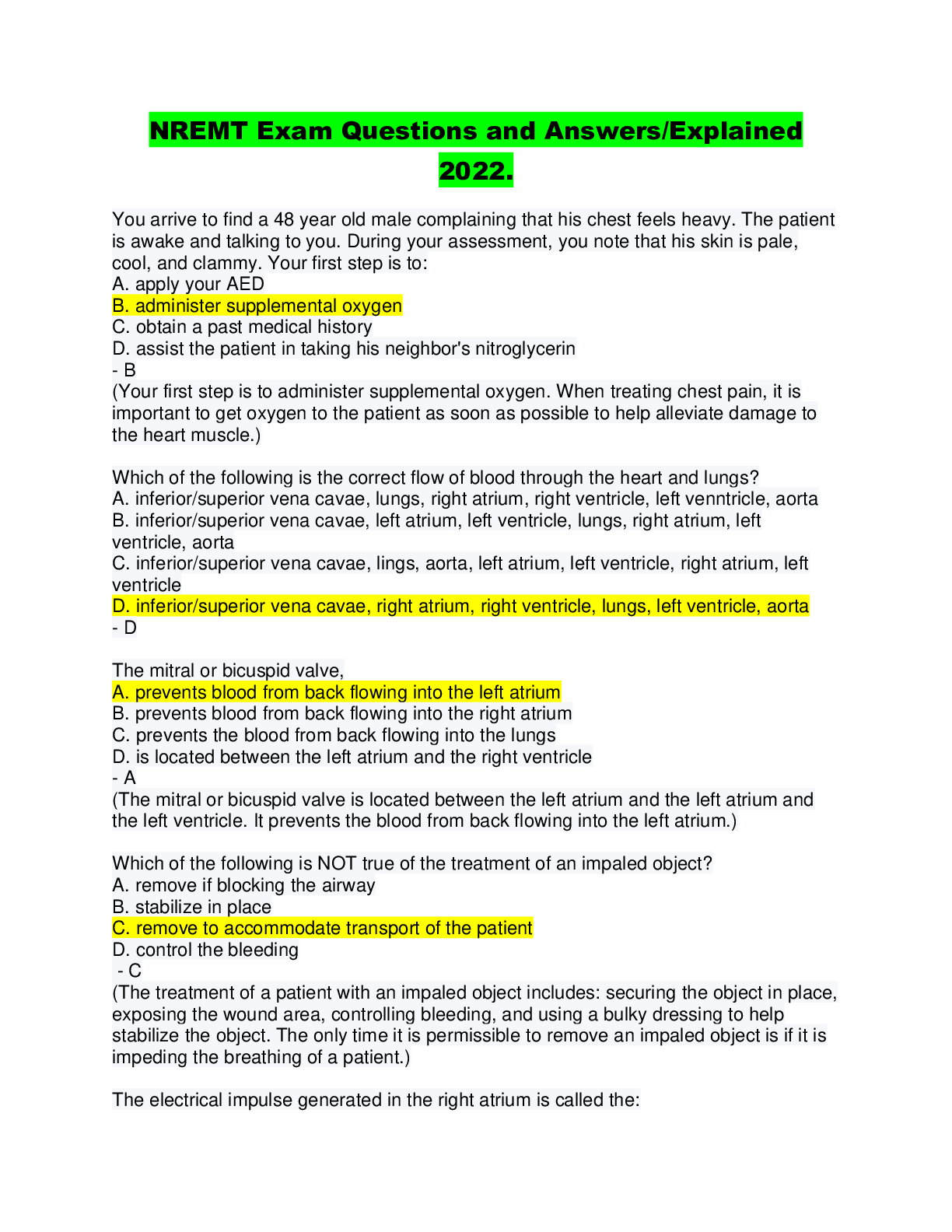
.png)
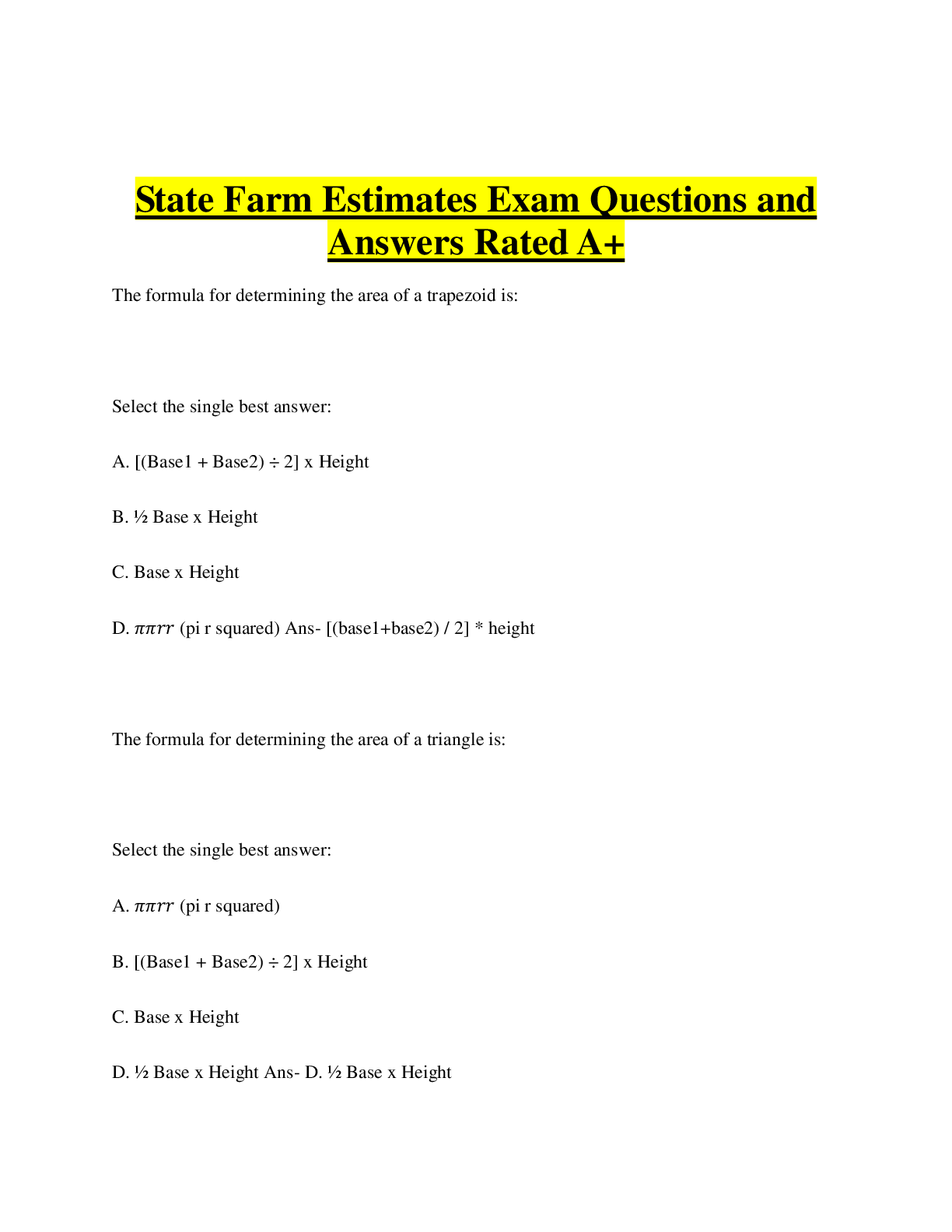

.png)
